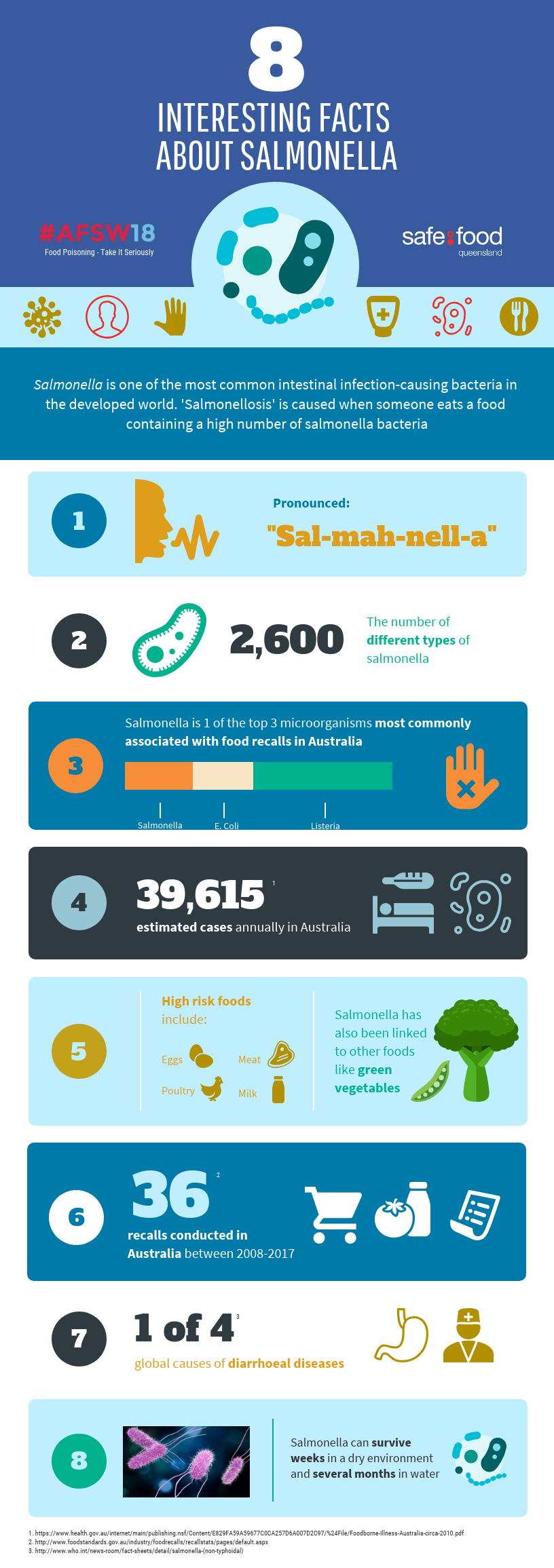Food poisoning is serious business. Each year, millions of people fall sick from consuming contaminated food or water. Most food poisoning cases last a few days but, for some, the effects can be much longer, if not fatal!
Salmonella is a bacterium that can be found in the gut of many pet, livestock and wild animals, as well as in people. It can also be found in soil, water and food exposed to the faeces of animals or people.
Common foods that can be contaminated with Salmonella include raw meat, chicken, eggs and untreated milk and other dairy products, raw fruits and vegetables, and ‘low moisture foods’ like spices, peanut butter and chocolate.
Salmonella can be spread by an infected person through inadequate hand washing and contact with animals.
The most common symptoms of Salmonellosis are:
- diarrhoea
- stomach cramps
- fever
The illness normally lasts between 1-7 days.
To learn more about Salmonella, check out this Infographic:

Reduce Your Risk
You can minimise your risk of contracting Salmonellosis by practicing good hygiene:
- wash your hands before preparing and eating food, after handling raw food, touching animals and working in the garden
- separate raw and cooked foods
- wash raw fruits and vegetables thoroughly before eating
- cook food thoroughly, especially meat, poultry and eggs, so that it is piping hot (they should not be eaten raw or undercooked)
- keep all kitchen surfaces and equipment, including knives, chopping boards and dish cloths, clean
- store raw foods below cooked or ready-to-eat foods in the fridge to prevent contamination
